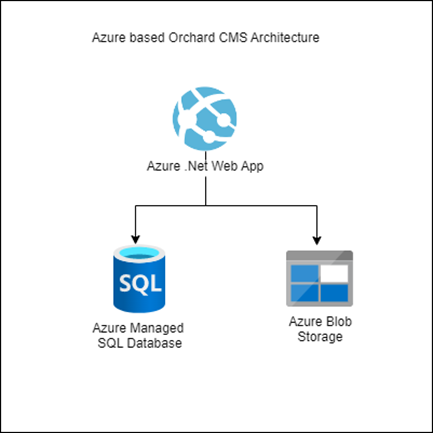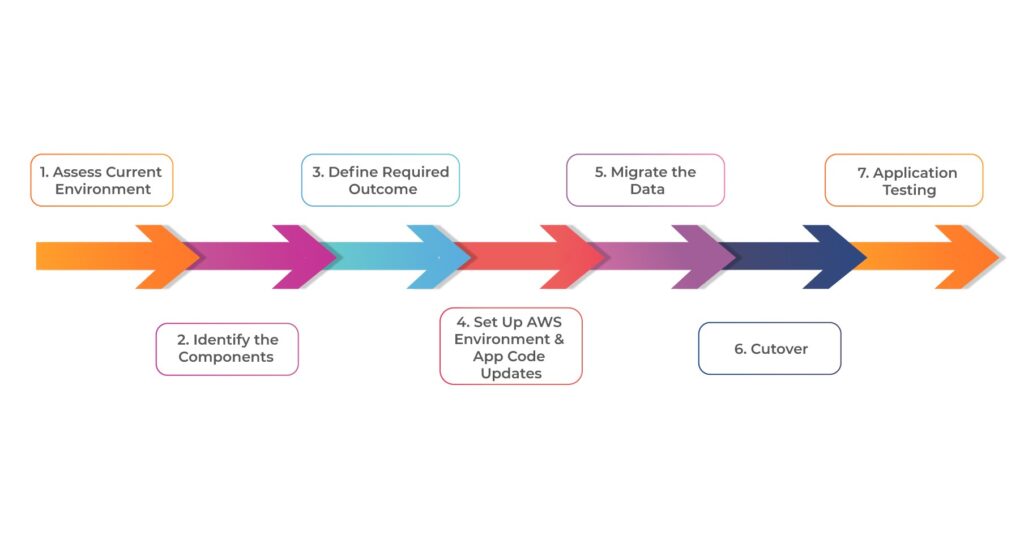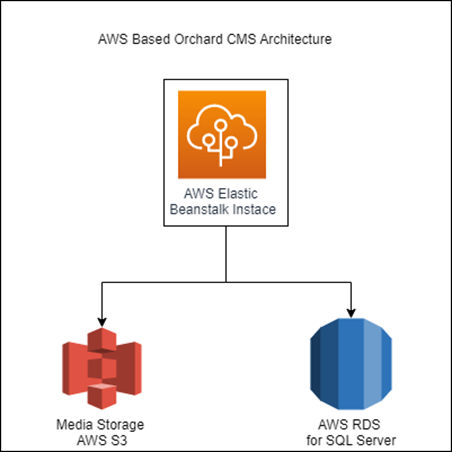[ad_1]
There may be varied causes for desirous to software migration as an Azure-hosted software to an AWS atmosphere. You could be searching for AWS options, value financial savings, or your crew’s technical experience and alignment with organizational insurance policies. Nonetheless, migrating an Azure-based software to Amazon is usually a advanced and difficult activity, particularly for CMS (content material administration system) purposes involving a number of Azure companies like blob storage, Redis cache, and so on.
Aside from the appliance options, you could take into account the appliance efficiency, cost-effectiveness, and scalability earlier than executing the migration. This text explains the steps you might want to take to efficiently migrate a .NET-based CMS software from Azure to an AWS atmosphere. As an instance how the migration is completed, we’ll use the instance of Orchard CMS migration from Azure to AWS
The Step-by-Step Software Migration Course of
Step 1: Assess the Present Atmosphere
The preliminary step in migrating a .NET-based CMS software from Azure to AWS entails understanding the appliance atmosphere appropriately. Because of this you perceive the appliance structure, its code, its dependencies on different Azure companies or third-party companies, useful resource consumption, each day visitors on the appliance, and software limitations.
Let’s take the instance of Orchard CMS, which is hosted on Azure utilizing Azure Internet Apps and the SQL database. In Step 1, it’s a must to perceive the appliance structure and analyze all of the dependencies of the CMS on Azure on the code stage. You even have to make sure that you comprehend all of the enterprise workflows and decide whether or not they’re migratable to AWS.

Step 2: Determine the Parts
It entails figuring out the elements that you’ll migrate from Azure to AWS along with figuring out the AWS companies that may change the Azure companies. Furthermore, you additionally must see if there are any limitations within the AWS companies you may be utilizing – do you require any code modifications for the migration?
Listed below are a number of the different components you must take into account in step two.
- Information migration
- Software downtime
- Prices
We suggest creating structure diagrams of each the present and proposed environments to allow higher understanding. Within the case of Orchard CMS, you have to to checklist the AWS companies for use as a substitute for Azure companies. For example, you should use Elastic Beanstalk to exchange Azure Internet Apps and use Amazon RDS to host the CMS database.
Subsequent, analyze the price of each environments and make it possible for the migration value doesn’t exceed the funds obtainable for internet hosting the appliance. Additionally, you will must plan the information migration and the instruments you’ll use emigrate the database. Ideally, you must create a brand new software structure in AWS and checklist down all of the options, together with downtime for the migration.

Step 3: Outline the Required Final result
On this step, it’s a must to finalize the required consequence from this migration. What purpose do you wish to obtain by migrating your CMS software from Azure to AWS? The reply may be value optimization, efficiency enchancment, or a corporation coverage replace.
Due to this fact, be sure that your AWS elements enable you to meet your aims. If, for some motive, they don’t, you will have to replace the stakeholders and cease the migration.
It’s best to determine the enterprise worth related to the migration. Our instance case (Orchard CMS) migration is a part of an even bigger infrastructure migration from Azure to AWS infrastructure. Nonetheless, in case your migration plan is related to efficiency or value, then you could guarantee your targets are met after the migration.
Step 4: Set Up the AWS Atmosphere and Software Code Updates
Subsequent, it’s a must to implement the required code modifications you recognized in Step 2. After you have got made modifications to the code, begin creating assets on AWS. It entails creating assets recognized in Step 2, like EC2, Amplify, S3 Bucket, safety teams, insurance policies, subnets, and so on.
After creating these assets, deploy the appliance code utilizing pipelines and code deploy options and make it possible for the appliance works effective earlier than embarking on the subsequent step. Within the case of Orchard CMS migration, Step 4 entails creating new Beanstalk and RDS situations primarily based on the structure diagrams and assets recognized in Step 2. You additionally must arrange the code pipelines to auto-deploy modifications when code is pushed within the code repository.

Step 5: Migrate the Information
That is probably the most essential a part of migrating a CMS application from Azure to AWS. On this step, you migrate the content material and assets (pictures, pdfs, movies, and so on.) from Azure to AWS. Varied instruments can be found to facilitate knowledge migration, like AWS Direct Join, AWS Database Migration Service, and so on.
You need to use any of those companies emigrate the information, or you are able to do it manually as nicely. Use file switch companies to facilitate the switch of pictures and different assets. Throughout this step, you might want to be sure that all of your knowledge migrate correctly and securely; there shouldn’t be any knowledge loss or corruption.
Within the case of Orchard CMS migration, Step 5 entails upgrading the database by taking a backup of the manufacturing hosted on Azure and importing it in RDS. After getting migrated the information, you must guarantee every part is working as anticipated, and there’s no knowledge loss.
Step 6: Cutover
On this step, swap over from the outdated Azure atmosphere to the brand new AWS atmosphere. This may increasingly contain a DNS change, and also you may even face some downtime, so you could make sure the cutover is completed on the proper time to keep away from any service disruption for finish customers.
Within the case of Orchard CMS migration, you modify your area’s DNS, and it’ll level to the newly arrange AWS atmosphere.
Step 7: Software Testing
That is the ultimate step within the software migration course of. Check your app to make sure it really works correctly and all of the targets recognized in Step 3 have been achieved.
Wrap up
A .NET-based CMS software migration from Azure to AWS requires thorough planning, correct execution, and strong testing. By following the steps talked about on this article, you’ll be able to guarantee a profitable migration from Azure to AWS. Nonetheless, we strongly suggest utilizing expert migration professionals to execute the migration. It’s going to be sure that the train is cost-effective, performance-optimized, and, in the end, profitable.
In order for you any additional help in migrating your .NET CMS software from Azure to AWS, contact us at [email protected].
[ad_2]

